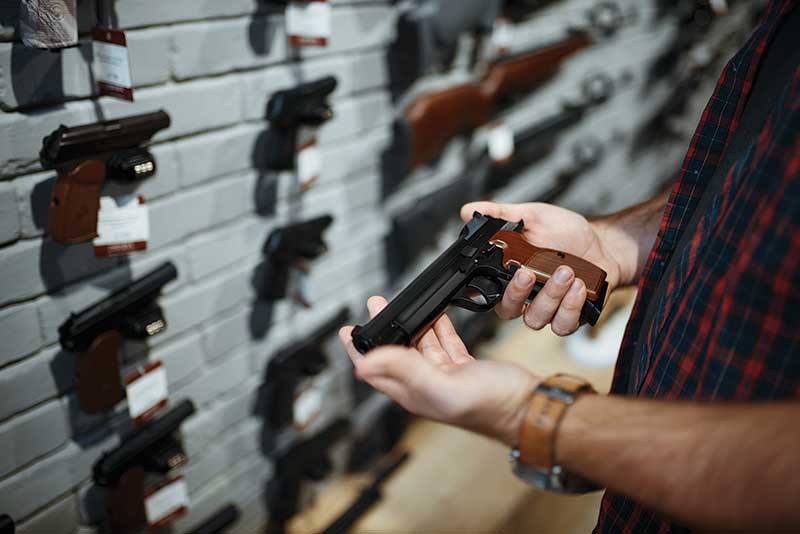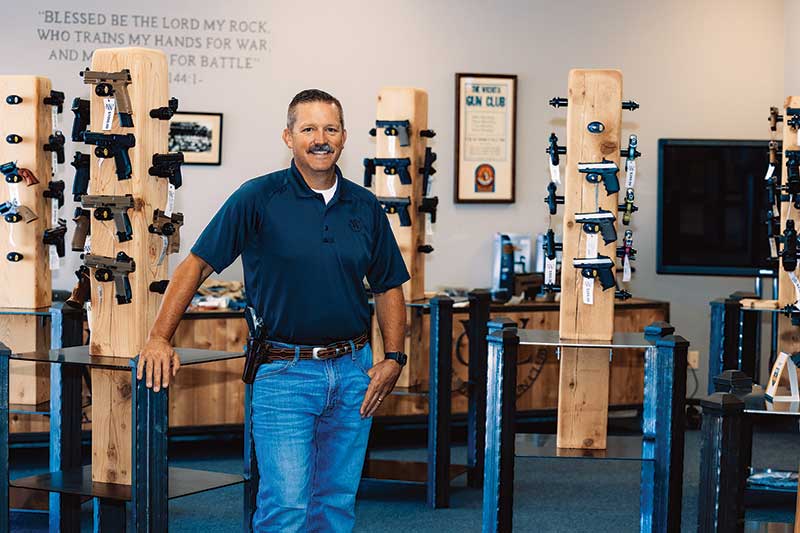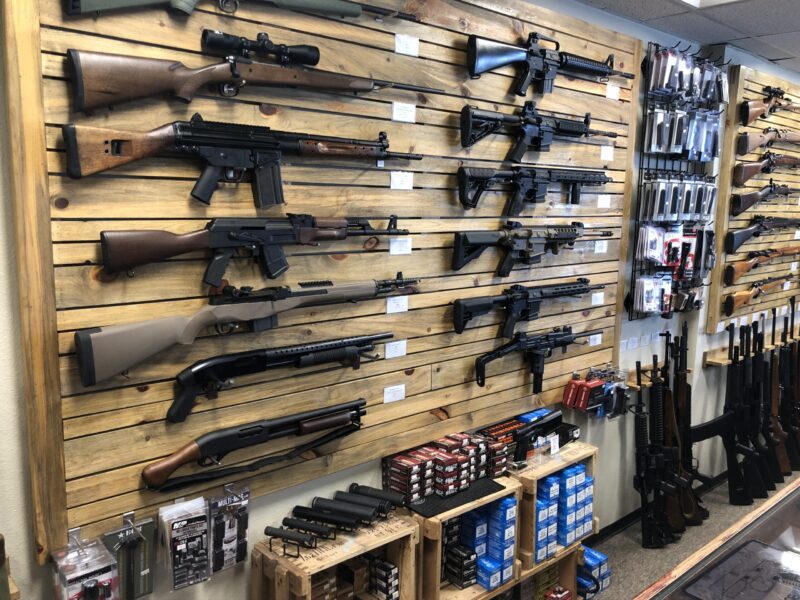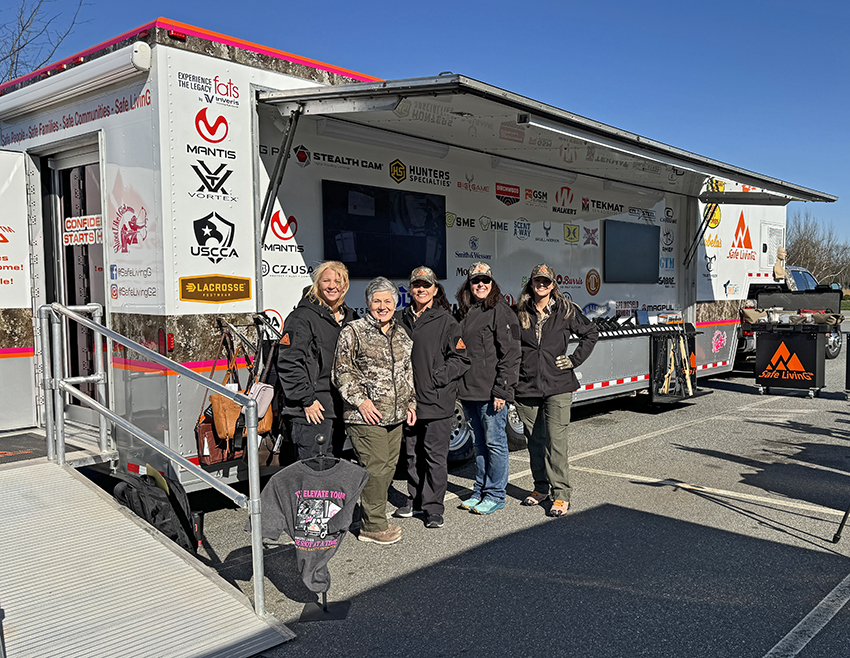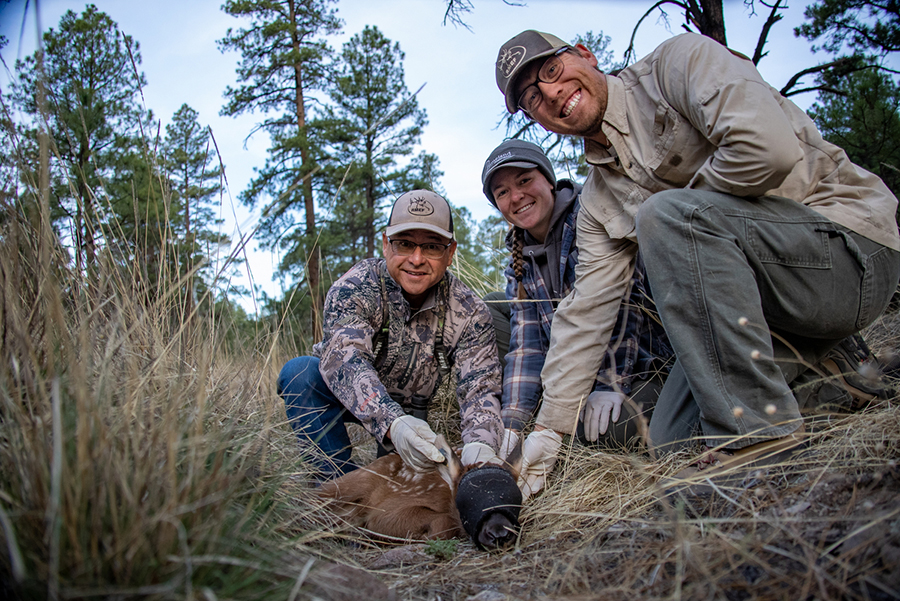Buying, Selling & Marketing
Used Guns
We’ve done a lot of speculating these past couple of years over the eventual fate of all those guns gobbled up by first-time buyers. How many of them, we’ve wondered, might end up on the used-gun market?
Mike Rust, general manager of H&H Shooting Sports in Oklahoma City, remembers joking with his sales staff about this very topic during the hectic days of 2020 and 2021. “We figured we’d be buying those guns back in a year and a half,” Rust recalled.
So far, at least, it hasn’t really been happening. Perhaps this isn’t surprising, considering we still live in a world of turmoil. COVID continues to linger. Civil unrest lurks in the shadows. And the nation’s political divisions show no sign of healing.
More recently, Russia’s invasion of Ukraine has added something new for people to worry over, suggests Jess Hancock, owner of The Wichita Gun Club in Wichita, Kan.
“There’s always going to be something else out there to be afraid of,” he proposed.
Still, this seems as good a time as any to talk about the used-gun market and how to approach it. It’s an area with the potential for high profit margins and an ability to differentiate your shop from the one down the street. But it does bring its own set of headaches.
Both shops say the used-gun market is hot, with plenty of opportunities to buy and sell. The key, they say, is to understand the segment, including how much to pay and where to sell what you’ve bought.
“The money has to be right,” Hancock noted, “but every gun will sell.”
Finding Used Inventory
One of the first challenges of this segment is deciding how to bring used inventory into the shop — and how aggressive you want to be. If you want to have a constant influx of “new” used guns on your shelves, it will take more than just waiting for customers to bring them in. It helps to let everyone know you’re in the market, contends Rust.
“Every once in a while, we’ll do an advertising blitz to remind people we buy used guns,” he said.
Those reminders come in various forms. They have a sign on the front of the building. They’ve tried billboards with limited success. There’s a banner on the store website. They use radio and print ads. And they occasionally have store events designed to encourage customers looking to sell. Once a year, this takes the form of a “no gun turned away” promotion. The last one pulled in nearly 80 used guns.
“We ended up buying a bunch of crap,” Rust admitted. “But on the other side of the coin, we also bought a lot of nice stuff.”
And, as Rust points out, just because you advertise the event as “nothing turned away” doesn’t mean you have to pay more than something is worth.
Hancock buys his share of guns from local customers, but he’s also active in the estate market — picking up entire collections from across the country. They’ll go in and bid on everything, such as guns, boxes, knives, holsters and even safes.
What’s That Gun Worth?
Whichever method you choose, there are pricing issues — both in terms of what you pay and what you’ll sell the gun for — that need to be considered.
Of course, it’s easy to deal with common production guns. When someone brings a GLOCK 19 Gen5 through the door at H&H, Rust knows they can look up the new retail price and offer the customer about half.
The challenge comes when it’s something more exotic — maybe an old Colt Python, a WWII-era 1911 or a custom target rifle. This is when they turn to online research, including GunBroker.com’s concluded auctions, Guns International and Rock Island Auction. They also use the store’s own point-of-sale system for historical sales prices on similar guns.
“We try to price based on moving it within 30 days,” Rust shared. “Sometimes we’ll offer a little less upfront to give us some room to negotiate.”
If his folks can’t come up with a value they’re comfortable with, they’ll offer a consignment option to the seller. They charge a 20% fee on consignments, compared with a 35% markup on used guns. Still, the option can be lucrative.
“When it sells, I’ll make a lower margin, but I don’t have as much invested in inventory. We’ll do that all day long,” Rust stated.
“In a nutshell, you don’t want to tell a customer their old gun is worth $300 and then put it in a display case for $1,500. Not when there’s a decent chance the customer is going to see what you’ve done.”
H&H has, however, learned one valuable lesson regarding consignments. They charge the seller a $25 inventory fee (refundable if the gun sells). They used to collect the fee, spelled out in a contract, whenever someone changed their mind about selling. Often, those customers had no memory of agreeing to the fee — which led to some hard feelings. So now, H&H collects the fee upfront.
“This has completely eliminated the hassle of trying to convince someone they signed a piece of paper,” Rust explained.
Valuing exotic guns has become a frequent activity for Hancock, particularly when dealing with those estates, which often include rare and collectible firearms. Over the years, he’s developed a network of friends and industry sources who are experts on a wide range of collectible guns, including Colts and Smith & Wessons.
“We do our diligence and research,” Hancock shared, “but we still make mistakes.”
Consider his tale of the Korriphila HSP 701 handgun that recently passed through his shop. After some online research, they listed it on
Gunbroker.com for $9,500. Warning bells went off when the gun sold within a few minutes of going live. Then a few weeks later, they saw it sell again on the auction site for more than $17,000. What they hadn’t realized was the shop’s 9mm version was much rarer than the .45 ACP version they’d based their price upon.
“That guy doubled his money because he knew what I had,” Hancock said. “I knew I had a gem, but not that much of a gem.”
A Word About Honesty
Invariably, you’re going to run into issues of honesty and trust when delving into this arena. Both Rust and Hancock stress the value of playing it as straight as possible with customers.
With 10 years in the business, many of Hancock’s customers looking to sell guns come in because of a friend’s recommendation. It’s because they have a reputation for treating people fairly.
To help customers understand his pricing, they walk them through the process. They’ll point out completed auctions on Gunbroker.com to help them understand used-gun values — along with the store’s own need to make money on any deal.
“We’re pretty open about how we get to the prices we offer,” he stated. “In the end, doing the right thing is doing the right thing.”
There’s also the very real threat represented by the world of social media we live in. Word of a single bad transaction can spread widely.
Rust tells how they’ll occasionally buy a gun from a customer, only to realize later they underpaid for it. It’s a particular danger with older collectibles, where matching serial numbers and other factors can make a major difference in a gun’s value. When this happens, they’ll reach out to the shocked but appreciative customer to make up the difference.
In a nutshell, you don’t want to tell a customer their old gun is worth $300 and then put it in a display case for $1,500. Not when there’s a decent chance the customer is going to see what you’ve done.
“We’re trying to establish and build relationships,” Rust said. “We want to be seen as an honest shop.”
Marketing The Used Stuff
There are, of course, several ways to move used guns. The easiest is to just toss them in a display case and let capitalism do its thing. (This is unlikely to be the best option, however, for the more exotic guns or firearms you’d rather not display.)
Hancock has become increasingly active on various auction sites, recently hiring a staffer to take charge of the store’s online presence.
“We used to have three or four guns on the auction sites. Now we have 30,” he shared.
Consider a recent 120-gun estate they purchased from a collector in Wichita. After cataloging everything, they decided to send a third of those guns straight to auction.
“We know what sells and where it sells,” Hancock confirmed. “There are some things you don’t want on the sales floor. They just don’t fit the brand.”
Oklahoma City’s H&H uses Guns International for the rare and unusual. They also plan to list more of the used inventory on Gunbroker.com and other sites if they can find an employee to manage it.
“It seems like it’s just gravy,” Rust noted.
Keep in mind the fact there are likely collectors in your area who can be cultivated. Members of the H&H sales team have relationships with customers looking for certain types of guns. So, if someone brings in a boxed Colt Python from the early 1980s, it may never hit the display case.
“I’ve got a salesman who has a Colt collector on his speed dial. This is true of other brands and models,” Rust said. “If I can move a used gun in less than a day, it’s a home run.”
As you can see, there’s a lot of potential in this segment and it seems poised to grow. What’s worked for you in this arena? Do you see a wave of used guns coming back into your stores? Let the SI team know: comments@shootingindustry.com.

